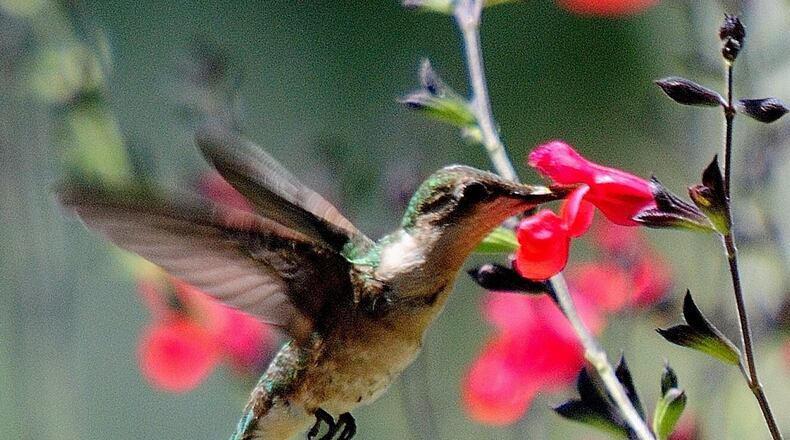The Garden Guy is here to encourage you to get on board with pollinators. I’ve been a bee and I can tell you the job they do is hard work. What it basically boils down to is no pollinators, no food to eat.
My experience at being a bee came courtesy of the Texas A & M peach breeding program when I was a graduate student a long time ago. After building makeshift, tent type greenhouses over a few peach trees, we set about removing the male flower parts of each and every flower.
The busy as a bee work so famously referred to by the Andrews Sisters came next as I was required to use a tiny brush and apply pollen to each and every female flower. Even with a couple of us bees in the greenhouse, this became a laborious task.
Such is the scenario that goes on each and every year with our farmers and ranchers as bees, wasps, butterflies, birds and even bats carry on pollination and thus our plant life, both fruits and seeds come into production.
At the Coastal Georgia Botanical Gardens in Savannah we grew pick-your-own-strawberries and at the end of the field, we had several honey bee hives or boxes. These bees were immensely helpful in producing a crop of strawberries and at the same time yielding a might tasty honey.
Of course, once the strawberry season was over it was necessary for us to have plants that were useful to the bees throughout the other 10 months of the year. I think we did a great job as just about every flower we grew, native and non-native bees, butterflies and hummingbirds relished. Believe me, Mother Nature also had our backside to with wild natives in the thickets and forest surrounding the garden.
As we still have much of the summer to go and still time to plant all sorts of flowers in our landscape for both beauty and pollinators I would like to suggest salvias also commonly called sages. There are so many great salvias, natives, imports and hybrids that offer much to the landscape. Most produce spikey flowers that stand tall and erect creating excitement in the garden. Every day I watch both hummingbirds and assortment of bees visiting my salvias.
Recently I was able to visit the trial gardens at Young’s Plant Farm in Auburn Alabama. There were hundreds of people from all over the country. The busy Interstate Highway was within view and yet with all of that hustle and bustle, there was something magical going on as bees were visiting a new salvia called Big Blue.
Big Blue has been in the market in limited quantities this year and is sure to be a hit for years to come. It is the first seed produced Indigo Spires type salvia. This represents one of the horticultural mysteries of life as Pan American Seed is introducing this cross of Salvia farinacea and S. longispicata to the industry in seeds. To this point, it has all been by vegetative propagation.
You’ll love Big Blue as it looks so glorious with bountiful blue spikes bringing in the bees and butterflies. But in the meantime, know that salvias whether they be blue, pink or red like the cherry sage, whether they are annuals or perennials, they all will serve a wonderful purpose to not only beautify but sustain bees, butterflies, and hummingbirds.
I hope you will not only Celebrate National Pollinator Week June 18-24 but each and every day of our long growing season.
———
(Norman Winter, horticulturist, garden speaker and author of, “Tough-as-Nails Flowers for the South” and “Captivating Combinations: Color and Style in the Garden.” Follow him on Facebook @NormanWinterTheGardenGuy.)
About the Author
Keep Reading
The Latest
Featured


